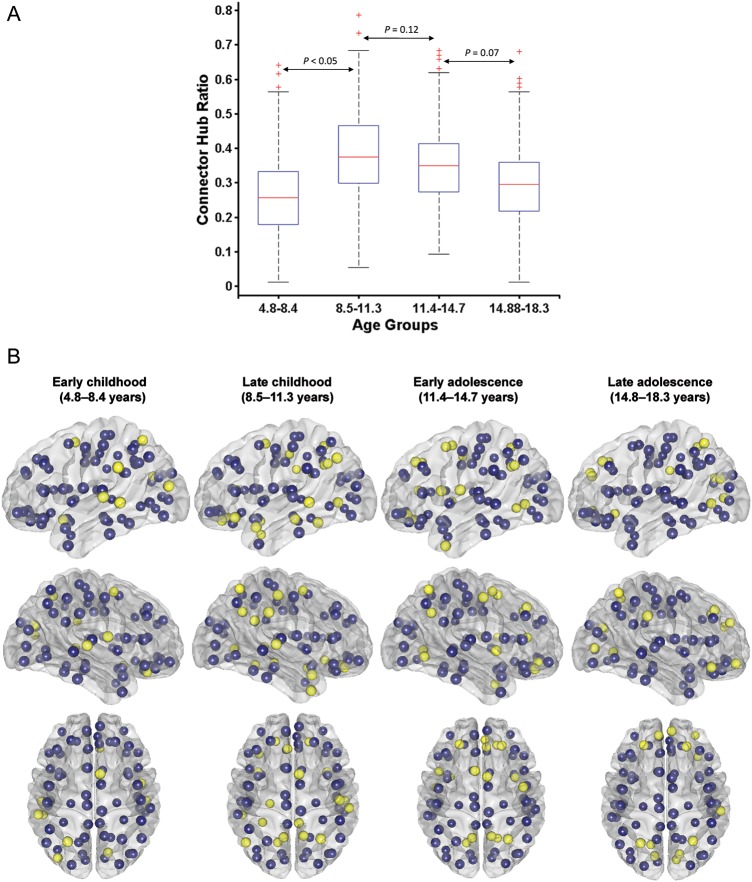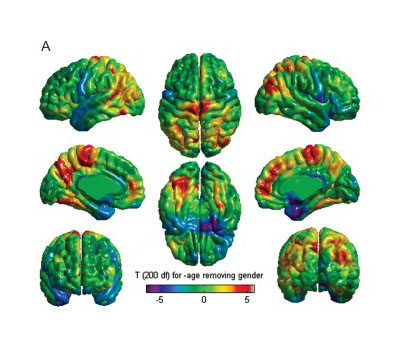Neuroimage. 2015 May 1;111:350-9. doi: 10.1016/j.neuroimage.2015.02.046. Epub 2015 Feb 28.
Khundrakpam BS1, Reid A, Brauer J, Carbonell F, Lewis J, Ameis S, Karama S, Lee J, Chen Z, Das S, Evans AC; Brain Development Cooperative Group.
CollaboratorsBall WS, Byars AW, Schapiro M, Bommer W, Carr A, German A, Dunn S, Rivkin MJ, Waber D, Mulkern R, Vajapeyam S, Chiverton A, Davis P, Koo J, Marmor J, Mrakotsky C, Robertson R, McAnulty G, Brandt ME, Fletcher JM, Kramer LA, Yang G, McCormack C, Hebert KM, Volero H, Botteron K, McKinstry RC, Warren W, Nishino T, Robert Almli C, Todd R, Constantino J, McCracken JT, Levitt J, Alger J, O’Neil J, Toga A, Asarnow R, Fadale D, Heinichen L, Ireland C, Wang DJ, Moss E, Zimmerman RA, Bintliff B, Bradford R, Newman J, Evans AC, Arnaoutelis R, Bruce Pike G, Louis Collins D, Leonard G, Paus T, Zijdenbos A, Das S, Fonov V, Fu L, Harlap J, Leppert I, Milovan D, Vins D, Zeffiro T, Van Meter J, Lange N, Froimowitz MP, Botteron K, Robert Almli C, Rainey C, Henderson S, Nishino T, Warren W, Edwards JL, Dubois D, Smith K, Singer T, Wilber AA, Pierpaoli C, Basser PJ, Chang LC, Koay CG, Walker L, Freund L, Rumsey J, Baskir L, Stanford L, Sirocco K, Gwinn-Hardy K, Spinella G, McCracken JT, Alger JR, Levitt J, O’Neill J.
Author information
-
- McConnell Brain Imaging Center, Montreal Neurological Institute, McGill University, Montreal, QC H3A 2B4, Canada.
Abstract

Recent findings from developmental neuroimaging studies suggest that the enhancement of cognitive processes during development may be the result of a fine-tuning of the structural and functional organization of brain with maturation. However, the details regarding the developmental trajectory of large-scale structural brain networks are not yet understood. Here, we used graph theory to examine developmental changes in the organization of structural brain networks in 203 normally growing children and adolescents. Structural brain networks were constructed using interregional correlations in cortical thickness for 4 age groups (early childhood: 4.8-8.4 year; late childhood: 8.5-11.3 year; early adolescence: 11.4-14.7 year; late adolescence: 14.8-18.3 year). Late childhood showed prominent changes in topological properties, specifically a significant reduction in local efficiency, modularity, and increased global efficiency, suggesting a shift of topological organization toward a more random configuration. An increase in number and span of distribution of connector hubs was found in this age group. Finally, inter-regional connectivity analysis and graph-theoretic measures indicated early maturation of primary sensorimotor regions and protracted development of higher order association and paralimbic regions. Our finding reveals a time window of plasticity occurring during late childhood which may accommodate crucial changes during puberty and the new developmental tasks that an adolescent faces.
PMID:22784607 | PMCID:PMC3729193 | DOI:10.1093/cercor/bhs187
Supplemental information
Publication type
MeSH terms
- Adolescent
- Adolescent Development/physiology
- Brain Mapping
- Cerebral Cortex/anatomy & histology
- Cerebral Cortex/growth & development*
- Child
- Child Development/physiology
- Child, Preschool
- Female
- Humans
- Magnetic Resonance Imaging
- Male
- Nerve Net/anatomy & histology
- Nerve Net/growth & development*
Grant support
- N01-HD02-3343/HD/NICHD NIH HHS/United States
- N01-MH9-0002/MH/NIMH NIH HHS/United States
- N01-NS-9-2314/NS/NINDS NIH HHS/United States
- N01-NS-9-2319/NS/NINDS NIH HHS/United States
- N01-NS-9-2315/NS/NINDS NIH HHS/United States
- N01-NS-9-2317/NS/NINDS NIH HHS/United States
- N01-NS-9-2316/NS/NINDS NIH HHS/United States
- N01-NS-9-2320/NS/NINDS NIH HHS/United States
More Resources
Full Text Sources
- Silverchair Information Systems
- Europe PubMed Central
- Ovid Technologies, Inc.
- PubMed Central


